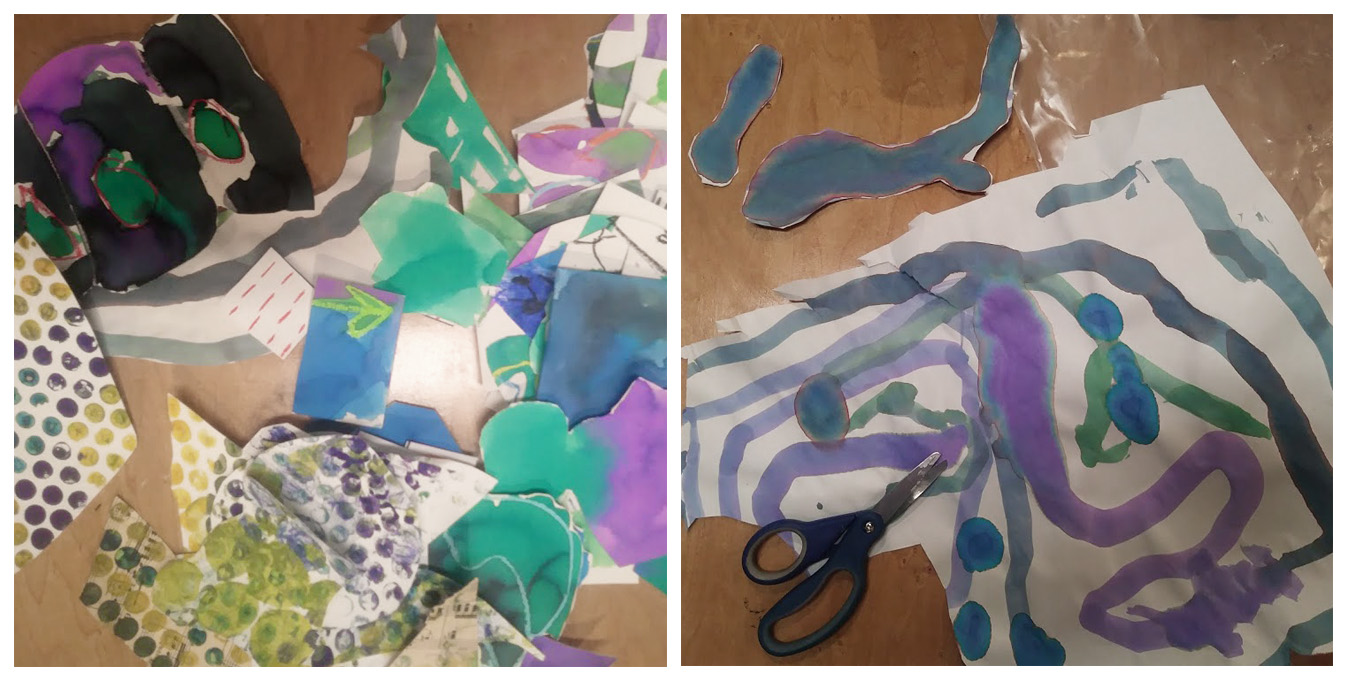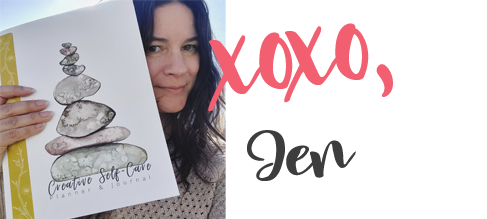In Fun With Collages, Part 1 we looked at torn paper collages, cut paper collage, and vision boards. The post was getting long, but I felt like there was still so much more to cover! So today we will look at recycled art paper collages, cardboard collages, fabric collages, and found object collages.
Just a reminder of the supplies you will need for your collage work:
- Old magazines, Papers, Cardboard or even Fabrics
- Glue (Glue sticks work well for lightweight papers, Mod Podge for fabrics, or a stronger craft glue for cardboard.)
- Scissors
- Something to glue your collage to. If you are working in a sketchbook or journal great, if not any piece of plain paper or cardboard will do.
- Found objects and a low temp hot glue gun for our final collage project!
Recycled Art Paper Collage

So in the last post we were mainly using magazine pages and other decorative papers such as scrapbook papers. Today we will be focused on recycled papers and repurposing old art work for our collage purposes. I enjoy doing a lot of process art with kiddos and myself, but you end up with a lot of art papers that really don’t have a function. So what are you to do with the ever-growing stacks of paper? Well collage of course!

I often will cut up old art papers into fun shapes to reuse at a later time either myself or with a kid’s art class. I like to keep fun cut up papers on hand in a collage basket for kids to experiment with.

Cardboard Collage
Cardboard is a great medium for collage. Shapes can be cut and arranged on a larger sheet of cardboard to create a new image. Paint can also be used to unify the piece of art created. You can play with texture by peeling the top layer off a piece of corrugated cardboard to reveal the fun rigid texture! I recommend using either a craft glue such as Elmers or even a low temp hot glue gun as the cardboard will need a bit more sticking power!

Fabric Collage
Another fun twist on collageing is using fabric scraps instead of paper. For fabric I like to use Mod Podge instead of glue sticks or craft glue because it dries flat without any ridges. I usually will use the Mod Podge both under the fabric and as a top coat to make sure it is sealed. I usually will use cardboard for my backer but you could experiment with other substrates as you wish.


Found Object Collage
The final style of collage that I want to discuss today is found object collage, sometimes refered to as assemblage art. For these projects you will need the low temp hot glue as many items are too bulky for craft glue. You will also need a sturdy backer or substrate. I often use wood or corrugated cardboard.

Quick tip: When working with children always be sure to use low temp glue guns. Point out the hot parts and let them know to place the glue on the backer surface and then add the small found object to avoid holding tiny items in their hand to glue which could lead to a burn. Show them how to use a small popsicle stick or some other stick like object to pres into the hot glue instead of pushing the object with their finger.

Kids love to use the hot glue, and it can be done safely even with very young kids as long as you pay attention to safety measures. Yes, small burns do happen from time to time but small injuries are a valuable learning experience. It is worth the small risk to see the sense of wonder and excitement in the face of a child who has acted independently with a tool!

I hope you have enjoyed this series of collage projects as much as much as I have. I love to both make my own collages and teach collage workshops and classes! They are so much fun and the possibilities are limitless!


One thought on “More fun with collage, part 2.”